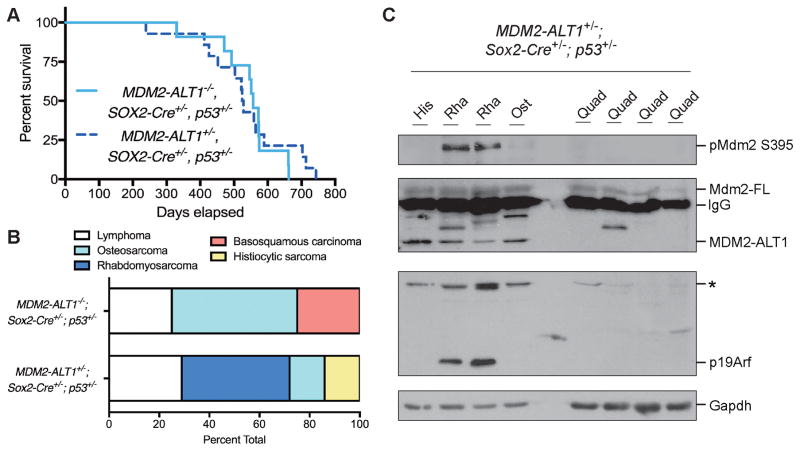Figure 5. Mice expressing MDM2-ALT1 and heterozygous for p53 show increased rhabdomyosarcoma and upregulation of phospho-MDM2 compared to control p53 heterozygous mice.
A. Kaplan-Meier analysis shows no significant difference in life expectancy between control (MDM2-ALT1−/−; Sox2-Cre+/−; p53+/−, n = 11) and experimental mice (2C12-MDM2-ALT1+/−; Sox2-Cre+/−; p53+/−, n = 14, p = 0.6650 Gehan-Breslow-Wilcoxon test). B. Graph depicting the tumor spectrum differences between primary malignancies of the control (n = 4) and experimental mice (n = 7) as determined by a comparative pathologist. The most common malignancy in p53 heterozygous null animals is osteosarcoma. Our control mice displayed approximately 50% osteosarcoma, however the tumor spectrum in experimental mice showed decreased occurrence of osteosarcoma (14%) and a greater proclivity for RMS (43%). C. Tumors from four mice (histiocytic sarcoma, His; rhabdomyosarcoma, Rha; and osteosarcoma, Ost) were analyzed for protein expression and quadriceps muscles from each corresponding mouse (Quad) were used for comparison. All tumors show higher expression of MDM2-ALT1 compared to the normal muscle tissue, whereas increased expression of pMdm2 (S395) was RMS-specific. Higher migrating bands of unknown origin (*) in the p19Arf panel are not phosphorylated or ubiquitinated forms of p19Arf.

